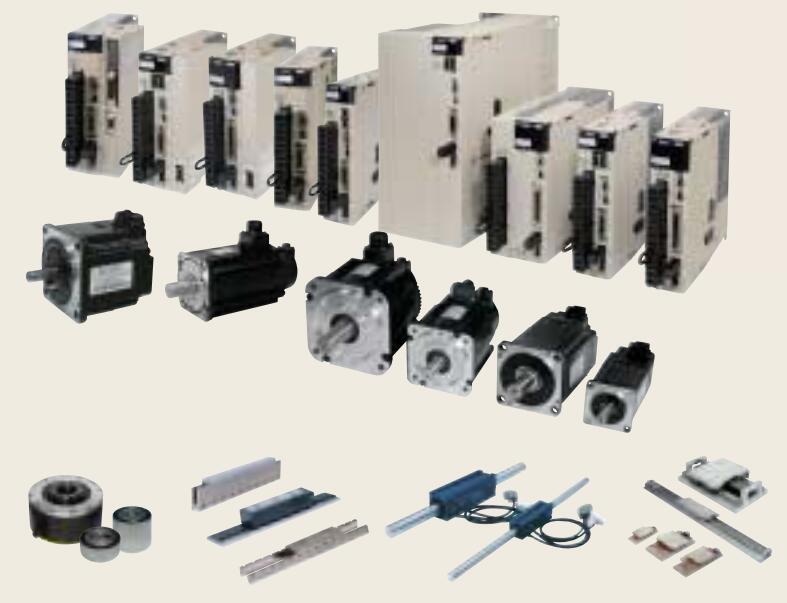Home
>> Products
>> Yaskawa
>> Servo driver / motor
>> SGDV type
>> SGMJV type motor
>> SGMJV-04ADABS | Yaskawa Middle inertia rotary servo motor SGMJV-04ADABS
SGMJV-04ADABS | Yaskawa Middle inertia rotary servo motor SGMJV-04ADABS
Yaskawa SGMJV-04ADABS Product information and technical parameters:
Brand: Yaskawa
Name: Middle inertia rotary servo motor
Model: SGMJV-04ADABS
Sigma -V series servo motor SGMJV.
Rated output: 0.4KW (400W).
Power supply voltage: AC200V.
Serial encoder: 20 bit Delta (standard).
Design sequence: standard.
Shaft end: with two side plane seat (optional).
Optional: with oil seal.
Medium inertia.
Instantaneous maximum torque (rating 350%).
Equipped with a high resolution serial encoder (13\/20 bit).
Max speed up to 6000r\/min.
Variety is complete (50 ~ 750W, with hold brake).
Use example:
Semiconductor manufacturing equipment,
Placement machine,
Punch printed circuit board,
Robot,
Handling machinery,
Food processing machinery.
Rating and specifications:
Rated time: continuous.
Vibration level: V15.
Insulation resistance: DC500V, 10M, or above.
Using ambient temperature: 0 ~ 40 degrees C.
Excitation mode: permanent magnet type.
Installation method: flange type.
Heat resistance grade: B.
Insulation withstand voltage: AC1500V 1 minutes.
Protection mode: fully enclosed self cooling type IP65 (except shaft through part).
The use of environmental humidity: 20 ~ 80% (not dew).
Connection mode: direct connection.
Rotation direction: clockwise direction (CCW) rotation at the load side under the direction of rotation
Equipped with DeviceNet communication function type servo unit (servo controlled power supply drive type)
Maximum applicable motor capacity: 1.5kw.
Power supply voltage: three phase AC400V.
Interface: instruction selection and installation (rotary type servo motor).
Matching (hardware): paint.
Matching (software): standard Yaskawa SGMJV-04ADABS.
Matching (parameter): standard.
Optional modules: DeviceNet module (servo control power driver) + full closed loop module SGMJV-04ADABS
Communication specifications for DeviceNet based on open field network.
The combination of the DeviceNet controller and the V can be used to implement motion control in a simple way.
Can make use of the city''s rich DeviceNet support software.
Can use the upper controller to manage the servo information Yaskawa SGMJV-04ADABS.
Through the network from the host controller to monitor the running status of the servo drive, alarm information.
Using the upper controller to manage the servo information, which can improve the maintenance (shorten the debugging time, improve the efficiency of maintenance operations).
Save wiring, reduce the cost and improve the reliability Yaskawa SGMJV-04ADABS.
Because the upper controller and the servo unit are connected through the communication network, the connection is greatly saved.
Built in rich positioning function.
Can be from the upper controller (PLC or computer) to carry out a variety of simple positioning action.
Equipped with simple positioning, continuous rotation, and return to the origin of continuous rotary motion positioning, running and other rich positioning function.Large capacity servo unit.
Maximum applicable motor capacity: 55KW.
Power supply voltage: three phase AC400V.
Buckle: analog voltage \/ pulse sequence command type (rotary servo motor).
Design sequence: B.
Optional parts (hardware): ventilation duct installation type.
Improve the performance of large torque transmission machinery!
Vibration suppression function.
When the driving system of the machine is vibrating, the observer is used to reduce the vibration and suppress the vibration of the device.
Friction compensation function.
EEven when the load fluctuation, the gain can be suppressed without changing the position deviation SGMJV-04ADABS.
Therefore, the overshoot can be suppressed to ensure the stability of the device.
Feature tracking control.
Even the lower mechanical properties, but also the characteristics of the mechanical recovery,
Make the mechanical properties of the control action, thereby reducing the time to adjust the time
Maximum applicable motor capacity: 1.5kw.
Power supply voltage: three phase AC400V.
Interface: instruction selection and installation (rotary type servo motor).
Matching (hardware): paint.
Matching (software): standard Yaskawa SGMJV-04ADABS.
Matching (parameter): standard.
Optional modules: DeviceNet module (servo control power driver) + full closed loop module SGMJV-04ADABS
Communication specifications for DeviceNet based on open field network.
The combination of the DeviceNet controller and the V can be used to implement motion control in a simple way.
Can make use of the city''s rich DeviceNet support software.
Can use the upper controller to manage the servo information Yaskawa SGMJV-04ADABS.
Through the network from the host controller to monitor the running status of the servo drive, alarm information.
Using the upper controller to manage the servo information, which can improve the maintenance (shorten the debugging time, improve the efficiency of maintenance operations).
Save wiring, reduce the cost and improve the reliability Yaskawa SGMJV-04ADABS.
Because the upper controller and the servo unit are connected through the communication network, the connection is greatly saved.
Built in rich positioning function.
Can be from the upper controller (PLC or computer) to carry out a variety of simple positioning action.
Equipped with simple positioning, continuous rotation, and return to the origin of continuous rotary motion positioning, running and other rich positioning function.Large capacity servo unit.
Maximum applicable motor capacity: 55KW.
Power supply voltage: three phase AC400V.
Buckle: analog voltage \/ pulse sequence command type (rotary servo motor).
Design sequence: B.
Optional parts (hardware): ventilation duct installation type.
Improve the performance of large torque transmission machinery!
Vibration suppression function.
When the driving system of the machine is vibrating, the observer is used to reduce the vibration and suppress the vibration of the device.
Friction compensation function.
EEven when the load fluctuation, the gain can be suppressed without changing the position deviation SGMJV-04ADABS.
Therefore, the overshoot can be suppressed to ensure the stability of the device.
Feature tracking control.
Even the lower mechanical properties, but also the characteristics of the mechanical recovery,
Make the mechanical properties of the control action, thereby reducing the time to adjust the time
...More relevant models >>>>
 Last one: Yaskawa Middle inertia rotary servo motor SGMJV-02ADABS
Last one: Yaskawa Middle inertia rotary servo motor SGMJV-02ADABS next one: Yaskawa Middle inertia rotary servo motor SGMJV-06ADABS
next one: Yaskawa Middle inertia rotary servo motor SGMJV-06ADABS
Related download

